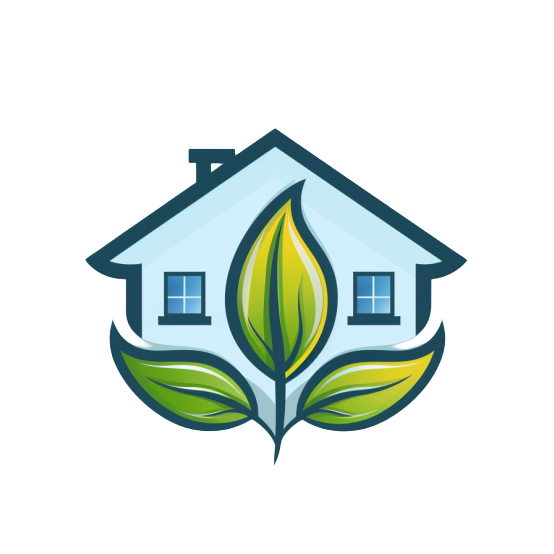Safeguarding Your Waterways: The Impact of Lawn Chemicals and Eco-Friendly Alternatives
Lawn care is more than just a routine task; it’s a part of creating a beautiful and healthy home environment. A well-maintained lawn not only enhances the aesthetic appeal of your property but also provides a space for relaxation and recreation. The choices you make in lawn care can have far-reaching effects beyond your backyard.
By choosing non-toxic alternatives and adopting eco-friendly lawn care practices, you can play a pivotal role in safeguarding our waterways and contributing to a cleaner, healthier world. Join us as we explore the importance of eco-friendly lawn care and discover practical solutions for maintaining a lush, green lawn without compromising the environment.
The Environmental Consequences of Toxic Lawn Chemicals
In lawn care, toxic chemicals such as pesticides, herbicides, and synthetic fertilizers are frequently used to control pests, weeds, and promote growth. These chemicals are designed to provide quick and effective results, making them a popular choice for many homeowners.
While these chemicals can offer immediate benefits, such as a weed-free lawn or rapid growth, they come with hidden dangers. The toxic substances in these products can have long-lasting effects on the environment, particularly on our water systems.
How Toxic Chemicals Contribute to Water Pollution
Chemical runoff occurs when rain or irrigation water washes these toxic substances off your lawn and into nearby waterways. This runoff can carry pesticides, herbicides, and fertilizers into rivers, lakes, and groundwater, leading to widespread contamination.
The presence of these chemicals in water bodies can have severe consequences. For instance, fertilizers rich in nitrogen and phosphorus can lead to algal blooms, which deplete oxygen levels in the water and harm aquatic life. Pesticides and herbicides can be toxic to fish, amphibians, and other wildlife, disrupting entire ecosystems.
Studies have shown that lawn chemicals are a significant source of water pollution. For example, a report by the U.S. Geological Survey found that pesticides were detected in more than 90% of water samples from streams in urban areas. Such statistics highlight the urgent need to reconsider our lawn care practices.
Effects on Aquatic Life and Water Quality
Toxic chemicals can have devastating effects on aquatic ecosystems. Fish, plants, and other wildlife are highly sensitive to these substances, which can lead to reduced populations and biodiversity. The disruption of these ecosystems can have cascading effects, impacting the entire food chain.
The long-term consequences of water pollution include the degradation of water quality and the loss of biodiversity. Contaminated water can affect not only wildlife but also human health, as these chemicals can make their way into drinking water supplies.
Exposure to contaminated water can pose significant health risks to humans, including skin irritations, respiratory issues, and even long-term illnesses such as cancer. By understanding these risks, you can take proactive steps to protect your family and the environment.
By recognizing the environmental consequences of using toxic lawn chemicals, you can make more informed choices and adopt eco-friendly alternatives that benefit both your home and the planet.
Eco-Friendly Lawn Care Tips
How to Choose Non-Toxic Alternatives
Switching to non-toxic alternatives is a crucial step in maintaining a healthy lawn without harming the environment. Consider using organic fertilizers, which are made from natural materials and provide essential nutrients without the harmful side effects of synthetic options. Natural pest repellents, such as neem oil or diatomaceous earth, can effectively manage pests without introducing toxic chemicals into your lawn.
There are numerous studies and recommendations available that highlight the effectiveness of non-toxic lawn care products. For instance, the Environmental Protection Agency (EPA) provides a list of approved organic pesticides and fertilizers that are safe for use.
By choosing products from trusted sources, you can ensure that your lawn care routine is both effective and environmentally friendly.
Best Practices for Eco-Friendly Lawn Maintenance
Understanding your soil’s composition is key to maintaining a healthy lawn. Conduct a soil test to determine its pH and nutrient levels, and use this information to choose the right type and amount of fertilizer. Organic fertilizers, such as compost or manure, can improve soil health and provide long-lasting benefits.
Weeds can be managed effectively without resorting to toxic chemicals. Techniques such as mulching, hand-pulling, and using vinegar-based weed killers can keep your lawn weed-free. Maintaining a thick, healthy lawn through proper mowing and watering can naturally suppress weed growth.
Integrated Pest Management (IPM) is a holistic approach to pest control that combines multiple strategies to minimize the use of chemicals. This includes encouraging beneficial insects, using physical barriers, and applying natural repellents. By adopting IPM practices, you can manage pests in a way that is safe for both your lawn and the environment.
Incorporating native plants and grasses into your lawn can significantly reduce the need for maintenance and chemical inputs. Native species are adapted to local conditions and are more resistant to pests and diseases. They also require less water and fertilizer, making them an eco-friendly choice for your lawn.
DIY Solutions for a Toxin-Free Lawn
Creating your own natural lawn care treatments can be both cost-effective and environmentally friendly. For example, homemade compost can enrich your soil, while a mixture of vinegar and water can serve as an effective weed killer. Experimenting with these DIY solutions allows you to tailor your lawn care routine to your specific needs.
We encourage you to experiment with eco-friendly lawn care practices and share your experiences with others. By adopting these sustainable methods, you can create a beautiful, healthy lawn that is free from toxic chemicals.
Your efforts can inspire others to make similar changes, contributing to a broader movement towards environmental responsibility. By following these eco-friendly lawn care tips, you can maintain a lush, green lawn while protecting the environment and promoting a healthier, toxin-free home.
Community Engagement and Sustainability Advocacy
Building a Community of Eco-Conscious Homeowners
Creating a toxin-free home is a journey best undertaken with the support of a community. We encourage you to join a network of eco-conscious homeowners who share your passion for non-toxic living. By connecting with others, you can exchange tips, experiences, and success stories, fostering a sense of camaraderie and shared purpose.
Your experiences and insights are invaluable. By sharing your tips and success stories, you can inspire and educate others on their journey to a toxin-free home. Whether it’s a new non-toxic product you’ve discovered or a DIY solution that worked wonders, your contributions can make a significant impact.
Advocating for Environmental Responsibility
Reducing chemical exposure is not just about protecting your home; it’s about safeguarding the health of your family and the planet. Toxic chemicals in lawn care products can have far-reaching effects, contaminating water sources and harming wildlife. By choosing eco-friendly alternatives, you are taking a stand for environmental responsibility and contributing to a healthier ecosystem.
There are numerous ways you can get involved in local and national sustainability initiatives. From participating in community clean-up events to advocating for policy changes that promote environmental protection, your actions can drive meaningful change. Organizations such as the Environmental Protection Agency (EPA) and local environmental groups often have resources and opportunities for involvement.
By engaging with a community of like-minded individuals and advocating for sustainable practices, you can amplify your impact and contribute to a broader movement towards a toxin-free, environmentally responsible future. Together, we can create a healthier, more sustainable world for ourselves and future generations.
Bringing It All Together
In this article, we’ve explored the significant impact that toxic lawn chemicals can have on our waterways and the environment. By understanding the dangers of these substances and their contribution to water pollution, you can make more informed choices for your lawn care routine.
We’ve provided you with practical, eco-friendly lawn care tips, from choosing non-toxic alternatives to implementing best practices for soil health and pest management. These steps not only help you maintain a beautiful lawn but also protect our precious water resources and promote a healthier ecosystem.
Engaging with a community of eco-conscious homeowners and advocating for environmental responsibility are powerful ways to amplify your efforts. By sharing your experiences and getting involved in sustainability initiatives, you can inspire others and contribute to a broader movement towards a toxin-free, sustainable future.
Remember, every small change you make in your lawn care practices can have a positive impact on your home and the planet. Together, we can create a healthier, greener world for ourselves and future generations. Let’s take these next steps towards a toxin-free living environment and make a difference, one lawn at a time.











